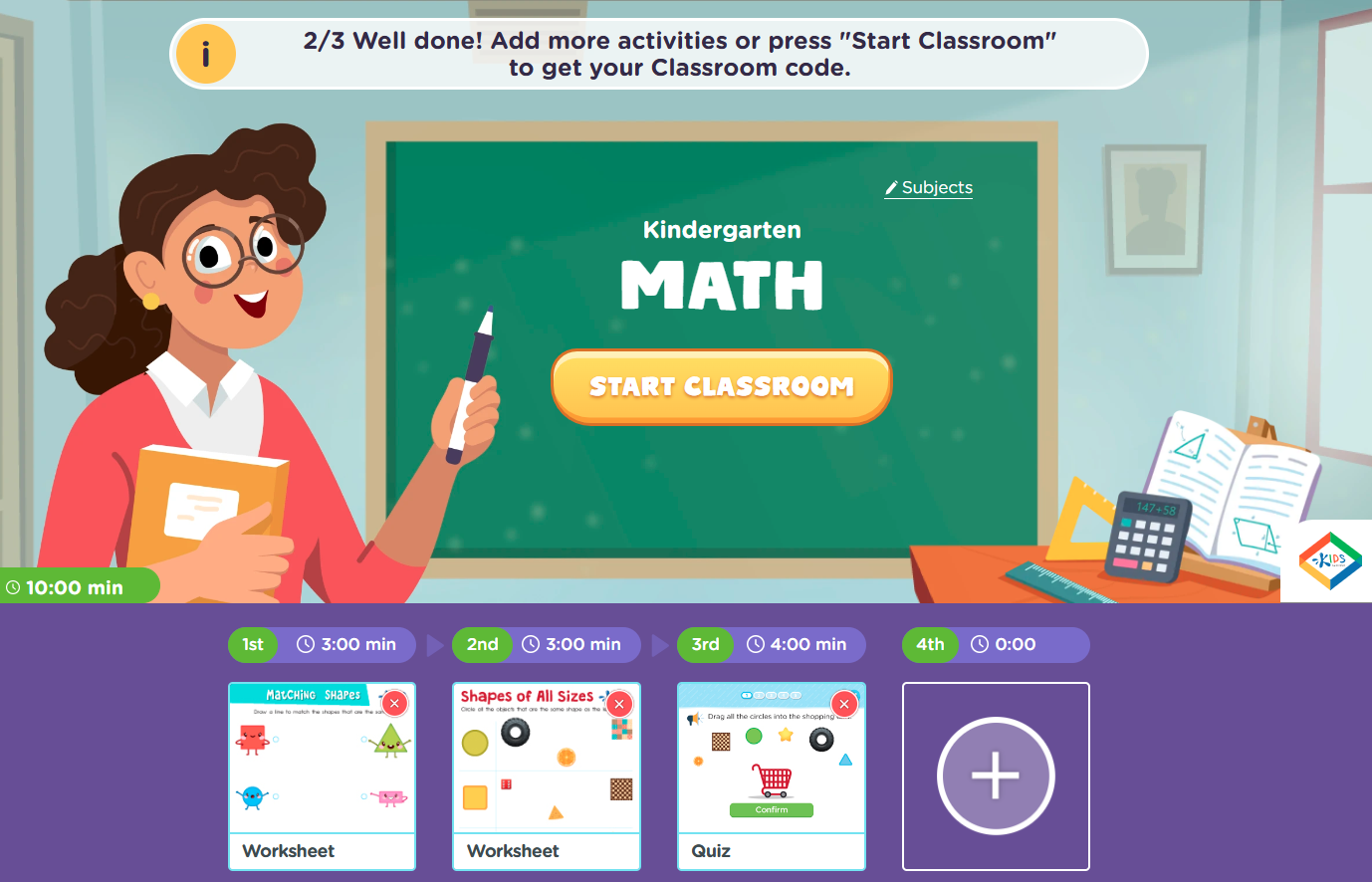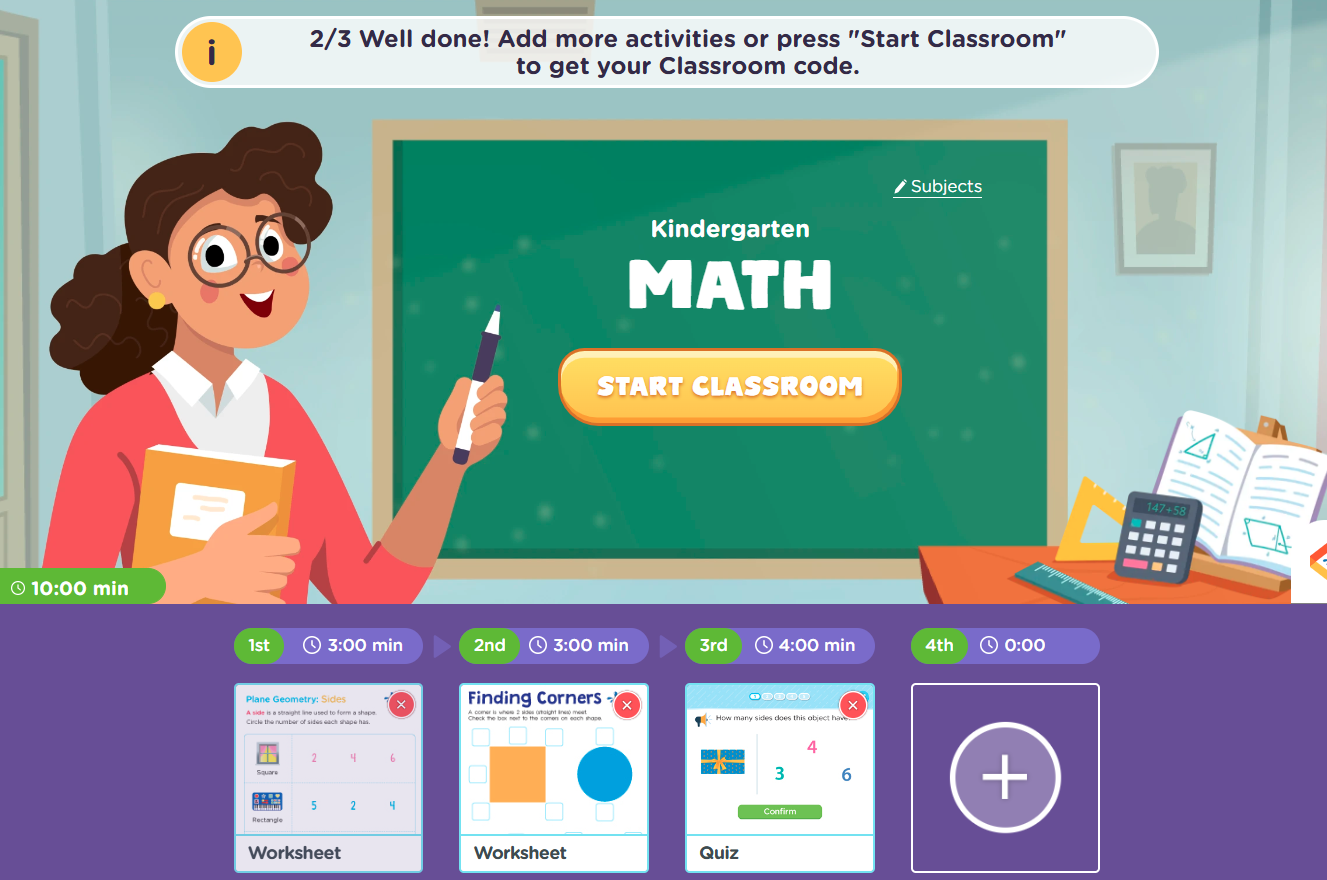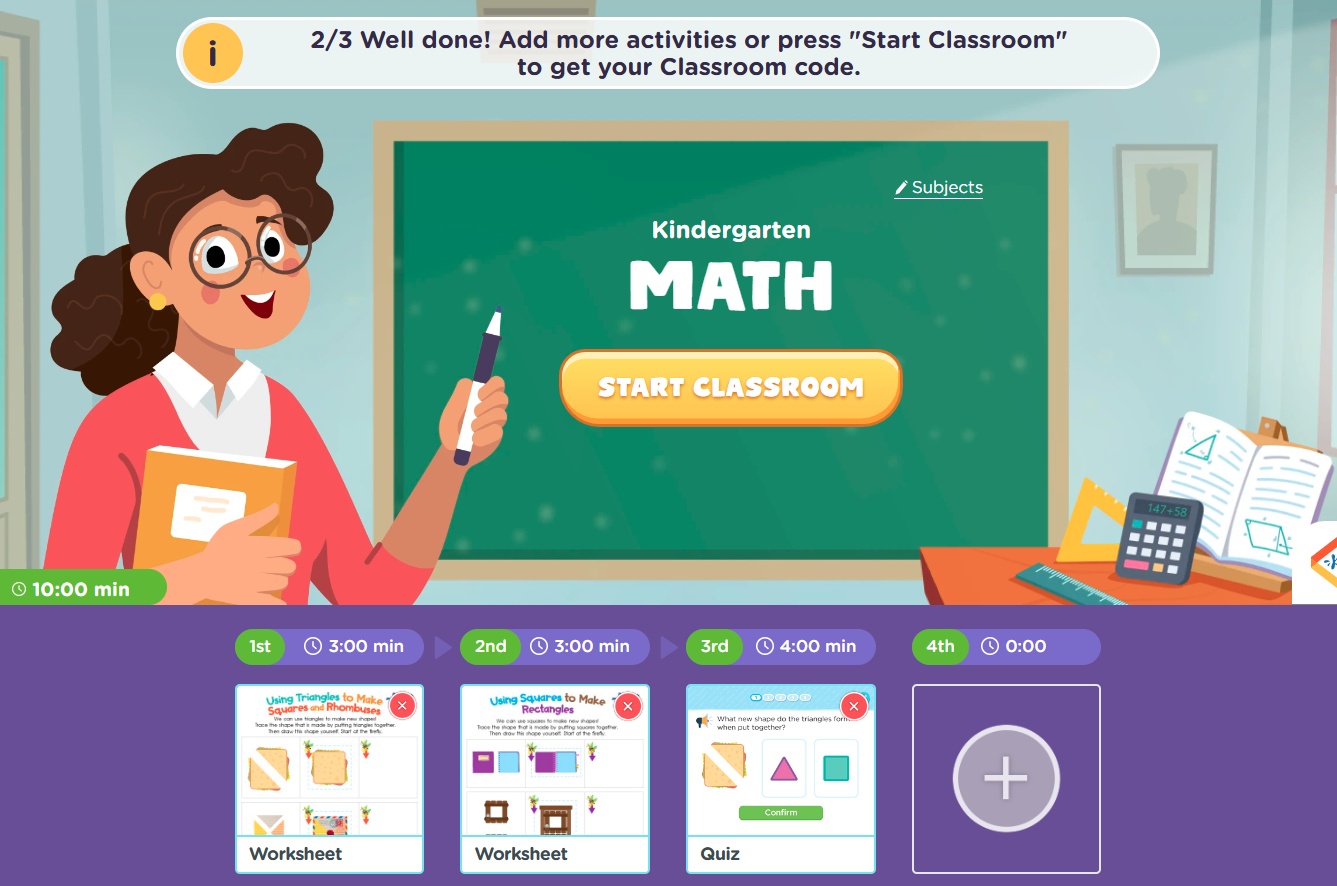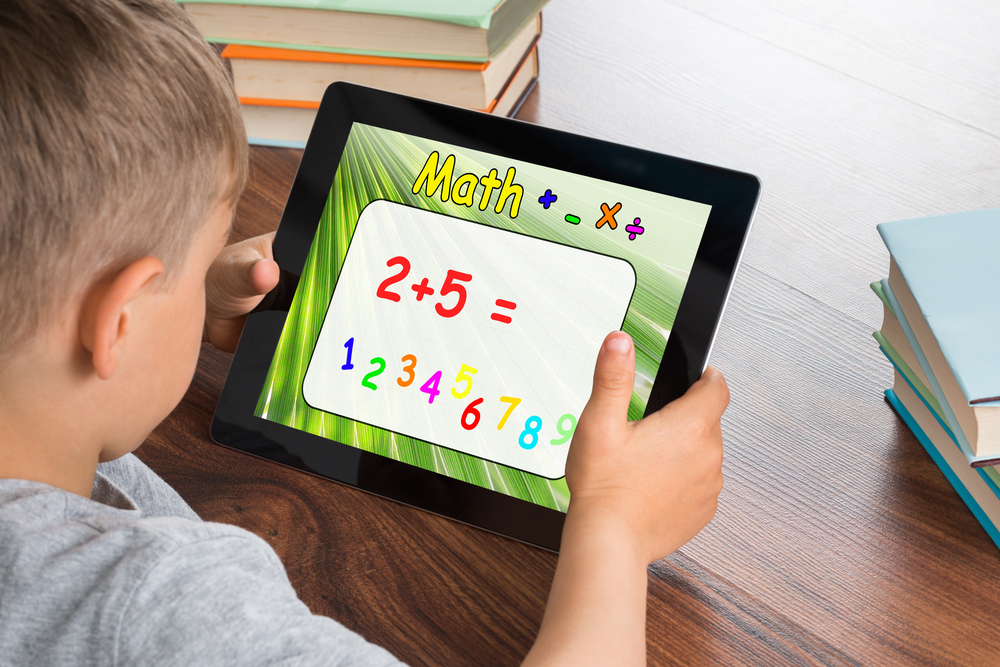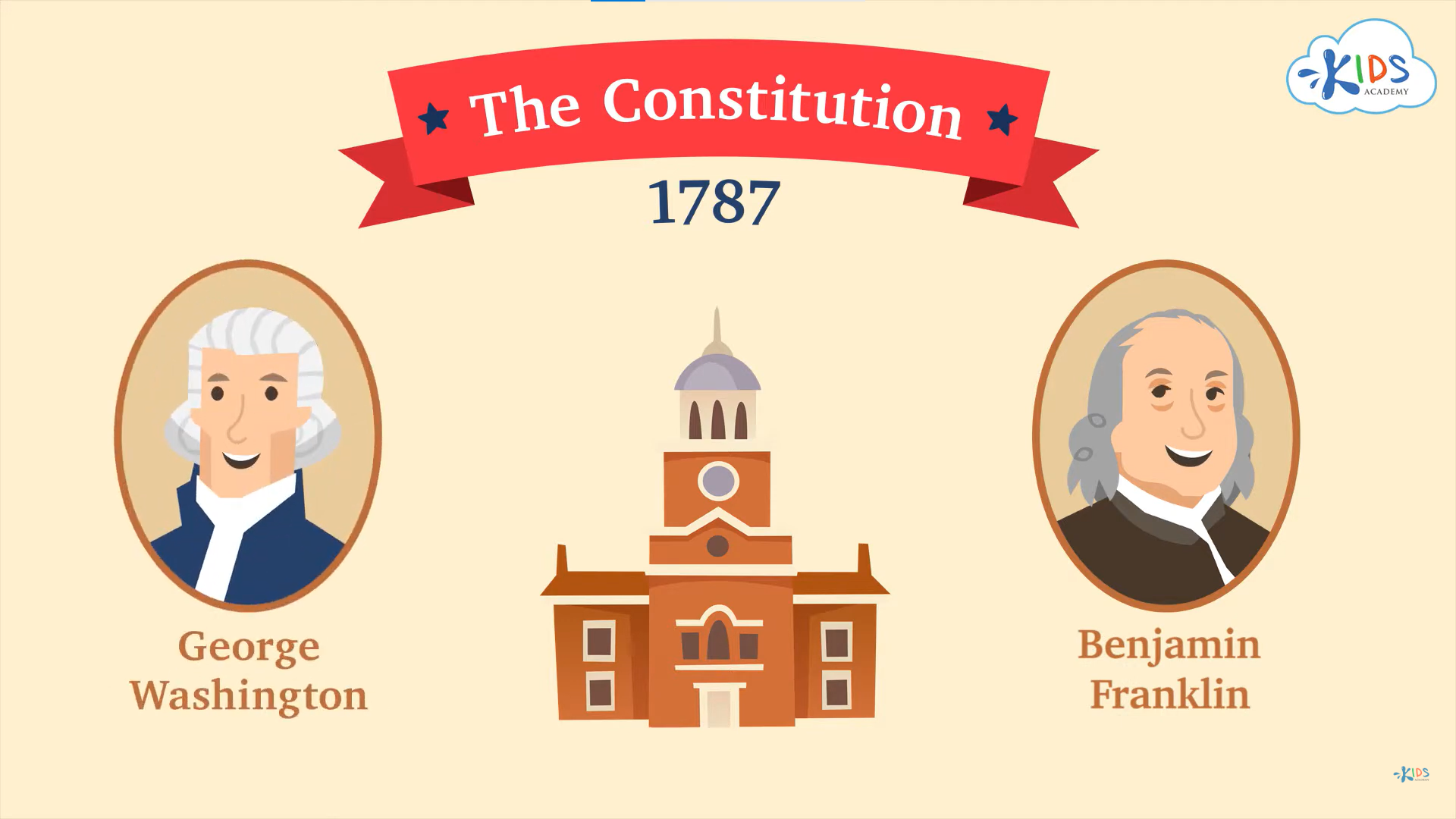Daily Knowledge Boost with Kids Academy: Exploring Shapes in Grade K
Oct. 9, 2024
By the end of Kindergarten, one goal is for children to be able to identify shapes around them in the world. Not only will children learn to identify shapes, they will be able to sort and make all different types of shapes. Today’s daily knowledge boost allows children to practice the skills of recognizing shapes, creating shapes,counting shapes, and identifying 2D or 3D shapes*.
*All the activities featured below can be opened in the interactive Classroom interface. While lessons with more than three activities are only available in Classroom Pro, all the lessons can accessed for free via the title link and completed using a web browser on the Kids Academy website.
Lesson 1: Name the Shape Regardless of Size
The foundation for geometric reasoning includes the recognition of shapes. Everyday children are exposed to different shapes of all different sizes.Having the vast knowledge and skill of identifying shapes regardless of their size will help build that necessary and strong foundation. In this lesson children will explore the fundamentals of shapes by recognizing the names and shapes of the most common shapes.
Activity Overview:
- Matching Shapes Worksheet: Here children will start off with the most common shapes and draw a line to the corresponding shape in a different size.
- Shapes of All Sizes Worksheet: Children will compare shapes with objects of similar shapes but different sizes.
- Identifying Different Sized Shapes - Quiz: Students will test their ability to identify and describe shapes that are seen in their everyday life. This is a great way to identify who may or may not be struggling with this concept.
Brain Break
Before starting a new lesson it's a good idea to take a brain break. At this age children have short attention spans and need time to recharge and refocus before heading in the next activity. This video is such a fun and engaging way to get students moving their bodies while still thinking about shapes.
Lesson 2: Compare Shapes Sides and Corners
As stated earlier, being able to identify shapes will allow children to have a strong start when it comes to introducing more complex topics that will be later introduced. This is a great lesson to dive into when your child recognizes shapes and can start learning about the properties of shapes.
Activity Overview:
- Plain Geometry Sides Worksheet: Children will learn what a side on a shape is and practice identifying how many sides each shape has. They will learn that each shape has a different number of sides through colorful visuals that are real world objects.
- Finding Corners Worksheet: Continuing on from what the skill of identifying sides in the previous activity, children will learn that when two sides meet they create a corner. Children will place a checkmark in each box that is next to a corner.
- Shapes: Number of Sides and Location of Corners - Quiz: Students will test their knowledge of the skills they were just practicing, identifying sides and corners.
Brain Break
This brain break involves a lot of movement and creating shapes they just finished analyzing. Children will enjoy the neon lights and the fun moves in this video.
Lesson 3: Making New Shapes from Other Shapes
Once children start recognizing shapes in their outside world they can start furthering their understanding of geometric concepts. In this lesson students will explore how shapes can combine to form new shapes reinforcing their critical thinking and creativity skills. With this lesson using real world objects students will better understand the importance of geometric shapes in their everyday life.
Activity Overview:
- Using Triangles to Make Squares and Rhombuses Worksheet: Children will practice using triangles to create new shapes using colorful objects from the real world.They will also practice drawing the new shape they created.
- Using Squares to Make Rectangles Worksheet: After making squares, children will use them to create new shapes. They will again practice drawing the new shape they created.
- Shapes: Number of Sides and Location of Corners - Quiz: After practice it is time to assess their ability to create and identify new shapes from different shaped components.
Brain Break
Get children up and engaged in a fun and light activity that elevates children’s moods and relieves stress, which can lead to a positive learning environment. In this fun video children will create shapes and exercise their bodies singing along with the well known Jack Hartmann.
Lesson 4: Identifying 2D and 3D Shapes
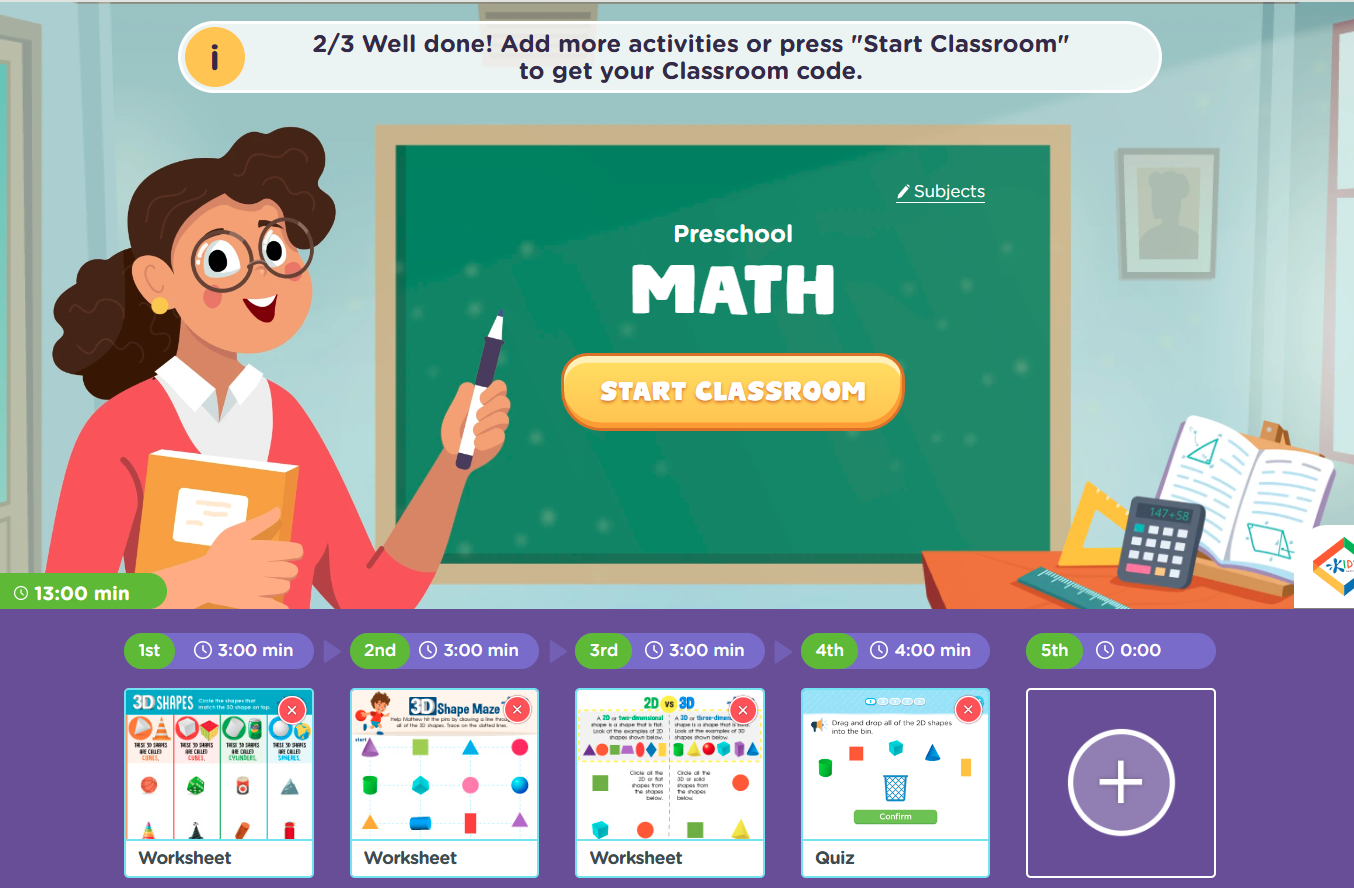
Once children start feeling comfortable with common shapes and their attributes they can start exploring 3- dimensional shapes. Understanding the difference between these shapes is important to a child’s cognitive development, enhancing their math skills, creativity, and their ability to navigate the world effectively. This lesson has children distinguish between 2D shapes and 3D shapes and understanding the properties that set them apart.
Activity Overview:
- 2D vs 3D Shapes Worksheet: After a clear explanation of 2D and 3D shapes children will sort out which shapes are 2D and which are 3D.
- 3D Shapes Worksheet: Now that children have learned about 3D shapes, they will further their learning with the types of 3D shapes.They will identify the types by circling the different examples of cones, cubes, cylinders, and spheres.
- Shapes Maze Geometry Worksheet: Children will help Matthew improve his bowling score by navigating through the maze, only drawing the line through 3D shapes.
- Identify 2D and 3D Shapes Quiz: This assessment can be used to test the ability of 2D or 3D shapes differentiation.
Brain Break
Take one last brain break and continue practicing identifying 2D and 3D shapes from the previous lesson. Get the students guessing and moving in this fun video.
2D or 3D Shapes: Under the Sea Math Brain Break
These lessons exploring shapes provide an engaging way for children in kindergarten to build essential math skills. Through structured lessons that emphasize recognition, comparison, and creation of shapes, children develop a strong foundation for understanding geometry. Each lesson is designed to be interactive, incorporating hands-on activities and brain breaks that keep students active and focused. For children who prefer to study independently, consider exploring our Talented and Gifted Online web app. This resource offers a variety of enriching activities tailored for advanced learners, ensuring they remain challenged and engaged!



